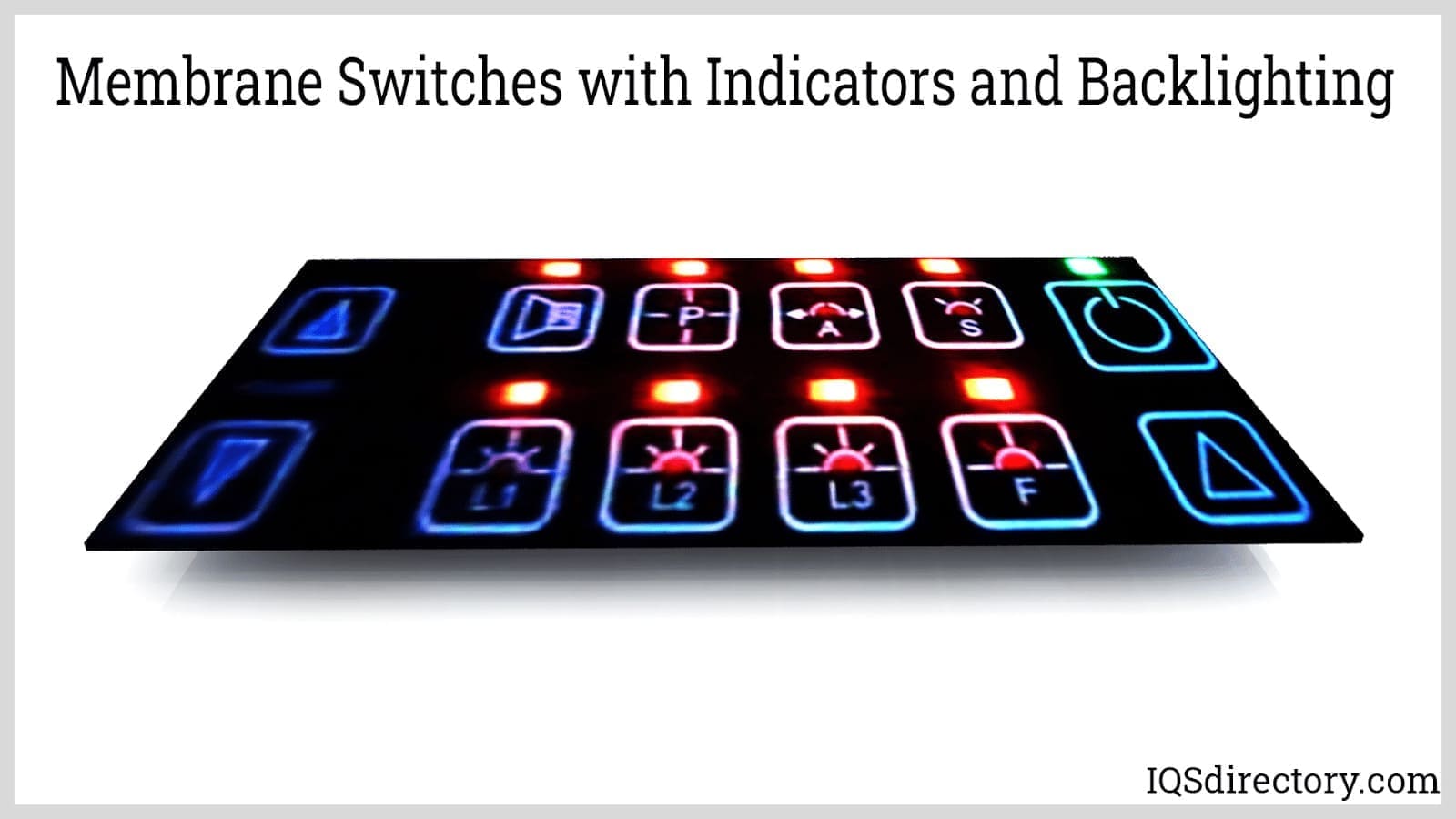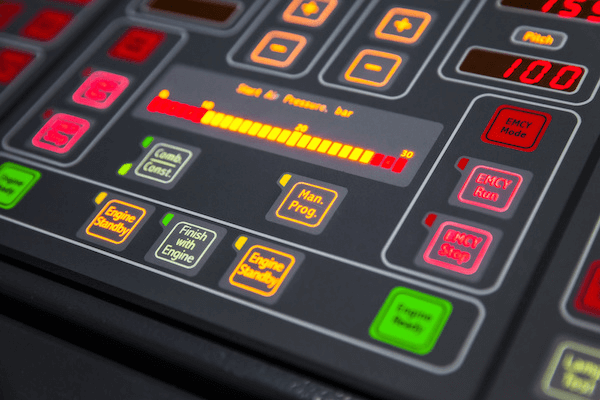Checking out the Uses of Membrane Layer Switch in Different Industries
Membrane layer switches are indispensable elements throughout multiple markets, consisting of consumer electronic devices and automotive markets. Their light-weight and sturdy nature enables effective use in small tools. In addition, these switches give resistance to environmental aspects, boosting their long life. As industries develop, the need for customizable services expands. This elevates vital questions regarding the future applications and innovations of membrane switch innovation. What new possibilities exist ahead for this versatile component?
Membrane Switches in Consumer Electronics
Membrane layer buttons play an essential role in consumer electronics, offering an efficient user interface for different gadgets. These buttons are created to be light-weight and slim, making them ideal for modern gizmos where room goes to a premium. Their flexibility allows for assimilation right into varied items, varying from family home appliances to handheld devices. The tactile responses offered by membrane layer switches over enhances individual communication, making certain a smooth experience.Moreover, membrane layer switches are resistant to dampness and dirt, which is very important for keeping performance in everyday environments. They can be tailored with different graphics and colors, allowing manufacturers to straighten with branding demands. Additionally, the cost-effectiveness of membrane switch modern technology makes it a recommended option for mass-produced electronics. As customer demand for sleek, user-friendly tools remains to grow, the relevance of membrane switches in supplying trustworthy, effective interfaces ends up being increasingly apparent, solidifying their area in the electronics sector.
Applications in the Automotive Market
In the automotive market, membrane buttons are utilized to boost both performance and aesthetic appeal within vehicles. These switches are generally integrated right into dashboards, control board, and infomercial systems, offering a sleek and contemporary user interface for guests and drivers. Their style permits seamless combination with numerous materials, which adds to the overall visual allure of the vehicle's interior.Furthermore, membrane buttons are valued for their toughness and resistance to ecological elements such as wetness, dirt, and temperature level variations. This makes them optimal for applications in auto settings, where reliability is vital. Furthermore, they can be tailored with different graphics and designs, enabling makers to create one-of-a-kind branding elements and individual experiences.As vehicle innovation proceeds to advance, the need for innovative control services will likely drive even more improvements in membrane layer button applications, guaranteeing they continue to be a critical element in contemporary automobile style.
The Function of Membrane Switches in Healthcare
Often overlooked, the duty of membrane layer switches in healthcare is important for guaranteeing the efficient procedure of clinical devices and equipment. These buttons act as individual interfaces for a range of applications, including analysis makers, client monitoring systems, and surgical tools. Their design permits simple cleaning and sterilization, which is vital in keeping hygiene in medical environments.Membrane buttons are also recognized for their longevity and resistance to put on, making them optimal for devices that sustain frequent usage. Their tactile feedback gives individuals with a dependable experience, boosting functionality for healthcare professionals. Additionally, membrane layer switches can be tailored with various graphics and layouts, guaranteeing that they meet certain requirements of various clinical applications. In general, the integration of membrane layer switches in health care modern technology not only enhances functionality yet likewise contributes to client safety and security and operational efficiency within clinical facilities.
Aerospace Innovations With Membrane Change Technology


Industrial Automation and Membrane Layer Switch Solutions
Membrane button technology is increasingly discovering applications in industrial automation, Recommended Site where dependability and performance are extremely important. These switches offer as indispensable parts in numerous automated systems, facilitating user interactions in atmospheres that require effectiveness and durability. Their design permits a seamless integration with control panels and tools, guaranteeing convenience of usage for operators.In commercial setups, membrane layer switches can stand up to harsh conditions, including exposure to dirt, dampness, and severe temperature levels. This durability makes them excellent for applications in manufacturing, logistics, and procedure control. In addition, their personalized functions allow business to produce customized services that meet specific functional needs.The responsive comments offered by membrane switches boosts individual experience, minimizing the possibility of errors throughout procedure - membrane switch. As markets remain to evolve in the direction of higher automation, the role of membrane layer button innovation is expected to increase, boosting and driving effectiveness process in complex commercial atmospheres

Regularly Asked Concerns
What Products Are Generally Used in Membrane Switch Building?
The materials generally made use of in membrane layer button building and construction consist of polyester, polycarbonate, sticky layers, published graphics, and conductive Extra resources inks. These elements assure versatility, responsiveness, and durability, making them appropriate for various electronic applications in varied markets.
Just How Do Membrane Switches Contrast to Standard Switches in Durability?
Membrane layer switches over normally use exceptional durability contrasted to standard switches, as they are much less susceptible to mechanical wear and tear. Their secured style protects against dust and moisture, enhancing longevity in numerous applications.
Can Membrane Switches Over Be Personalized for Specific Applications?
Membrane layer switches can undoubtedly be personalized for specific applications. Their layout flexibility enables tailored forms, capabilities, graphics, and sizes, making them ideal for diverse settings and enhancing individual communication across different digital gadgets and equipment.
What Are the Environmental Considerations for Membrane Layer Switch Disposal?
The environmental factors to consider for membrane layer switch disposal include prospective risks from products used, recycling chances, and adherence to guidelines. membrane switch. Proper disposal techniques are vital to reduce environmental influence and advertise sustainability within manufacturing processes
Exactly How Do Membrane Layer Switches Impact Individual Experience in Tools?
Membrane layer switches over greatly improve individual experience via responsive responses, durability, and design flexibility. Their seamless combination right into tools cultivates intuitive interactions, while their visual appeal can boost item presentation, ultimately contributing to user complete satisfaction and interaction. The tactile comments offered by membrane changes improves individual interaction, guaranteeing a seamless experience.Moreover, membrane buttons are immune to dampness and dirt, which is crucial for preserving performance in everyday environments. In enhancement, membrane layer buttons can be personalized with different graphics and layouts, ensuring that they meet details needs of different medical applications. Membrane buttons are likewise resistant to moisture and impurities, making sure toughness and durability in various cockpit and cabin applications. Membrane layer switch innovation is progressively finding applications in commercial automation, where dependability and efficiency are extremely important. Membrane layer switches typically supply remarkable toughness compared to traditional buttons, as they are less vulnerable to mechanical wear and tear.
Comments on “Membrane switch in gadget design: design considerations”